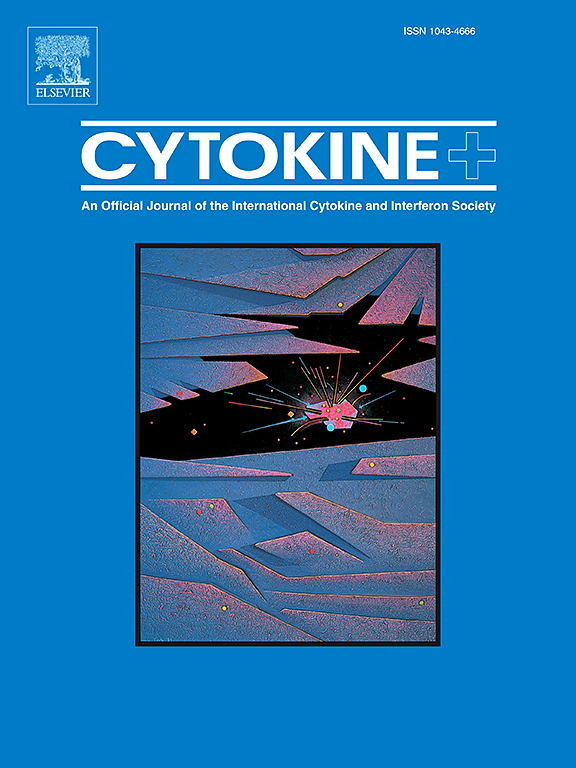bace1介导的IL-6信号调节:对小鼠神经活动和突触可塑性的影响
IF 3.7
3区 医学
Q2 BIOCHEMISTRY & MOLECULAR BIOLOGY
引用次数: 0
摘要
多效性细胞因子IL-6调节身体的许多过程,包括神经元功能。IL-6可以与膜结合受体(mIL-6R)结合,通过与信号传感器gp130的异聚化引发信号传导(经典信号传导),或者与其可溶性形式(sIL-6R)结合,作用于不表达mIL-6R的细胞(反式信号传导)。ß-分泌酶BACE1可以裂解gp130和IL-6R,我们假设BACE1可能通过调节IL-6信号通路改变神经元活性和突触传递。我们使用多电极阵列(MEA)记录来监测急性小脑切片中神经元网络的电活动以及海马高频刺激诱导的长期增强(LTP),并评估暴露于IL-6如何影响这些过程。采用药理学方法来阐明涉及BACE1的反式信号传导的作用。小脑切片的自发神经元活动在IL-6灌注后显著降低,但在冲洗期间恢复。BACE1抑制剂verubecestat或AZD3839可消除IL-6的抑制作用。此外,IL-6和LIF在海马切片中可逆性地抑制LTP,与小脑神经元相比,BACE1抑制剂verubecestat或AZD3839并没有消除IL-6对LTP的抑制作用。有趣的是,在洗脑过程中,BACE1抑制剂AZD3839对兴奋性突触后电位有显著的反弹效应,而verubecestat则没有。我们的研究结果支持了IL-6、LIF和BACE1在调节小脑神经元放电活动和海马突触可塑性的通路中的相关和差异作用,以及这种相互作用可能涉及记忆和学习缺陷。本文章由计算机程序翻译,如有差异,请以英文原文为准。
Shedding new light on BACE1-mediated modulation of IL-6 signaling: Implications for neural activity and synaptic plasticity in mice
The pleiotropic cytokine IL-6 regulates numerous processes in the body, including neuronal functions. IL-6 either binds to membrane-bound receptor (mIL-6R) and triggers signaling via heteromerization with the signal transducer gp130 (classical signaling), or binds to its soluble form (sIL-6R) to act on cells that do not express mIL-6R (trans-signaling). The ß-secretase BACE1 can cleave gp130 as well as IL-6R and we hypothesized that BACE1 may alter neuron activity and synaptic transmission via modulation of IL-6 signaling.
We used multielectrode array (MEA) recordings to monitor electrical activity of neuronal networks in acute cerebellar slices as well as long-term potentiation (LTP) induced by high-frequency stimulation in the hippocampus and to assess how exposure to IL-6 affects these processes. A pharmacological approach was applied to elucidate the contribution of trans-signaling involving BACE1.
Spontaneous neuronal activity in cerebellar slices significantly decreased upon perfusion with IL-6 but not LIF and recovered during wash out. BACE1 inhibitors verubecestat or AZD3839 abolished the inhibitory effects of IL-6. Furthermore, IL-6 and LIF reversibly inhibited LTP in hippocampal slices, and in contrast to cerebellar neurons, BACE1 inhibitors verubecestat or AZD3839 did not abolish the inhibitory effect of IL-6 on LTP. Interestingly, a dramatic rebound effect on excitatory postsynaptic potentials was observed with BACE1 inhibitor AZD3839 but not verubecestat during wash out.
Our results support relevant and differential roles of IL-6, LIF and BACE1 in pathways modulating neuronal discharge activity in the cerebellum and the synaptic plasticity in the hippocampus, and a possible involvement of this interaction in deficits of memory and learning.
求助全文
通过发布文献求助,成功后即可免费获取论文全文。
去求助
来源期刊

Cytokine
医学-免疫学
CiteScore
7.60
自引率
2.60%
发文量
262
审稿时长
48 days
期刊介绍:
The journal Cytokine has an open access mirror journal Cytokine: X, sharing the same aims and scope, editorial team, submission system and rigorous peer review.
* Devoted exclusively to the study of the molecular biology, genetics, biochemistry, immunology, genome-wide association studies, pathobiology, diagnostic and clinical applications of all known interleukins, hematopoietic factors, growth factors, cytotoxins, interferons, new cytokines, and chemokines, Cytokine provides comprehensive coverage of cytokines and their mechanisms of actions, 12 times a year by publishing original high quality refereed scientific papers from prominent investigators in both the academic and industrial sectors.
We will publish 3 major types of manuscripts:
1) Original manuscripts describing research results.
2) Basic and clinical reviews describing cytokine actions and regulation.
3) Short commentaries/perspectives on recently published aspects of cytokines, pathogenesis and clinical results.
 求助内容:
求助内容: 应助结果提醒方式:
应助结果提醒方式:


